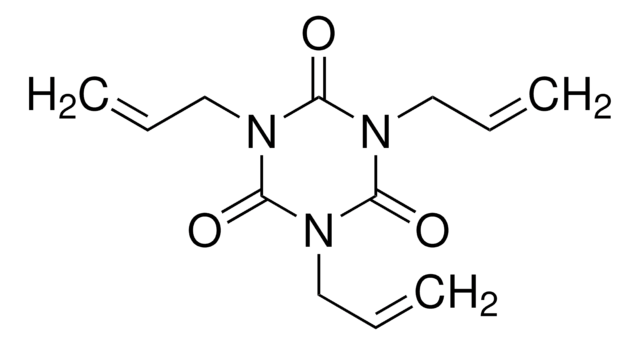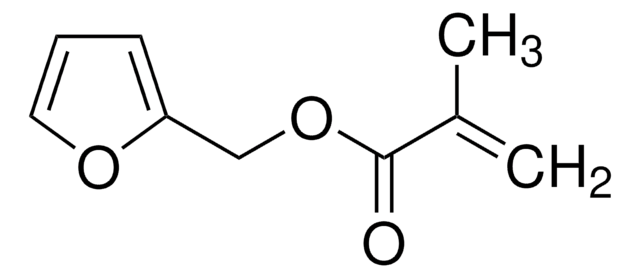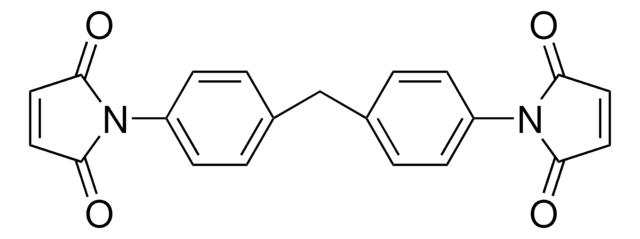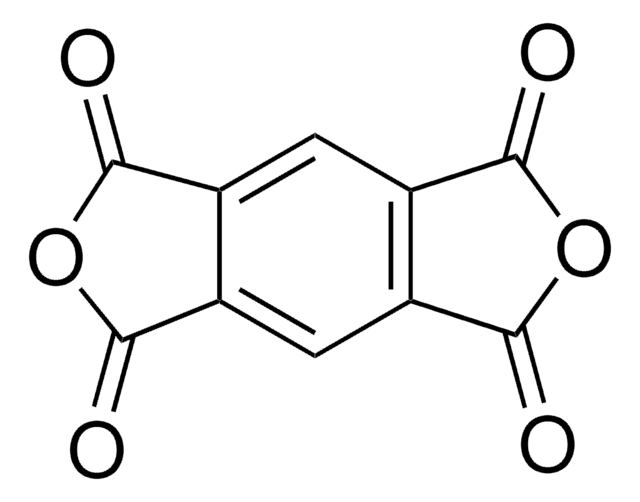543136
Propargyl acrylate
98%
Synonym(s):
Acrylic acid propargyl ester
Sign Into View Organizational & Contract Pricing
All Photos(1)
About This Item
Linear Formula:
CH2=CHCO2CH2C≡CH
CAS Number:
Molecular Weight:
110.11
EC Number:
MDL number:
UNSPSC Code:
12352100
PubChem Substance ID:
NACRES:
NA.22
Recommended Products
Quality Level
Assay
98%
contains
200 ppm BHT as inhibitor
refractive index
n20/D 1.447 (lit.)
bp
142-143 °C (lit.)
density
0.997 g/mL at 25 °C (lit.)
functional group
acrylate
ester
SMILES string
C=CC(=O)OCC#C
InChI
1S/C6H6O2/c1-3-5-8-6(7)4-2/h1,4H,2,5H2
InChI key
WPBNLDNIZUGLJL-UHFFFAOYSA-N
General description
Propargyl acrylate is a propargyl ester of acrylic acid. It participates in the preparation of lipid nanoparticles for use in siRNA delivery.
Application
Propargyl acrylate may be used to synthesize:
- linear poly(N-isopropylacrylamide)(PNIPAM)
- 1-[3-(2-methyl-2-dodecylsulfanylthiocarbonylsulfanylpropionyloxy)propyl]-1H-[1,2,3]triazol-4-ylmethyl acrylate, an acryloyl trithiocarbonate chain transfer agent
- propranolol-imprinted core–shell nanoparticles (mipCS)
Signal Word
Warning
Hazard Statements
Precautionary Statements
Hazard Classifications
Eye Irrit. 2 - Flam. Liq. 3 - Skin Irrit. 2 - STOT SE 3
Target Organs
Respiratory system
Storage Class Code
3 - Flammable liquids
WGK
WGK 3
Flash Point(F)
109.9 °F - closed cup
Flash Point(C)
43.3 °C - closed cup
Personal Protective Equipment
dust mask type N95 (US), Eyeshields, Gloves
Choose from one of the most recent versions:
Already Own This Product?
Find documentation for the products that you have recently purchased in the Document Library.
Hyperbranched polymers via RAFT copolymerization of an acryloyl trithiocarbonate
Vogt AP, et al.
Australian Journal of Chemistry, 60.6, 396-399 (2007)
Temperature-induced phase transition of well-defined cyclic poly (N-isopropylacrylamide) s in aqueous solution
Qiu X-P, et al.
Macromolecules, 40.20, 7069-7071 (2007)
Guang Huang et al.
Journal of separation science, 39(8), 1461-1470 (2016-02-26)
A novel silica-based stationary phase with branched octadecyl groups was prepared by the sequential employment of the Michael addition reaction and photoinduced thiol-yne click chemistry with 3-aminopropyl-functionalized silica microspheres as the initial material. The resulting stationary phase denoted as SiO2
Molecularly imprinted magnetic materials prepared from modular and clickable nanoparticles
Xu C, et al.
Journal of Materials Chemistry, 22.15, 7427-7433 (2012)
Multiparametric approach for the evaluation of lipid nanoparticles for siRNA delivery.
Alabi CA, et al.
Proceedings of the National Academy of Sciences of the USA, 110(32), 12881-12886 (2013)
Our team of scientists has experience in all areas of research including Life Science, Material Science, Chemical Synthesis, Chromatography, Analytical and many others.
Contact Technical Service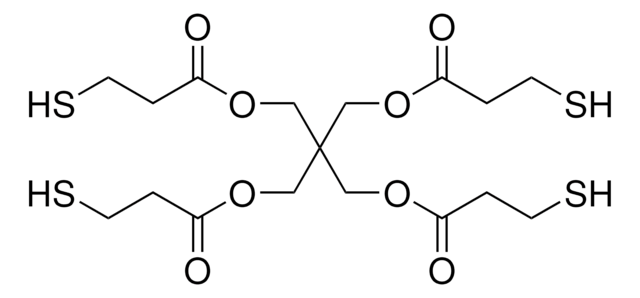
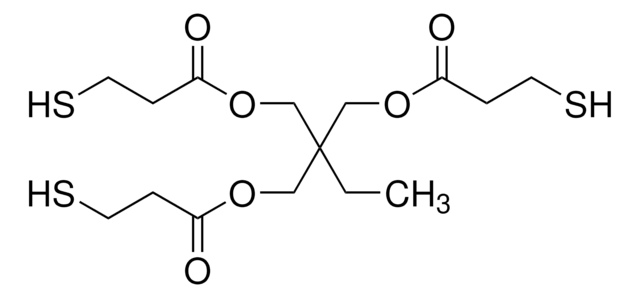
![4-Cyano-4-[(dodecylsulfanylthiocarbonyl)sulfanyl]pentanoic acid 97% (HPLC)](/deepweb/assets/sigmaaldrich/product/structures/204/925/30ae6ca0-5b0b-4963-a061-7e5e3d1a85af/640/30ae6ca0-5b0b-4963-a061-7e5e3d1a85af.png)
